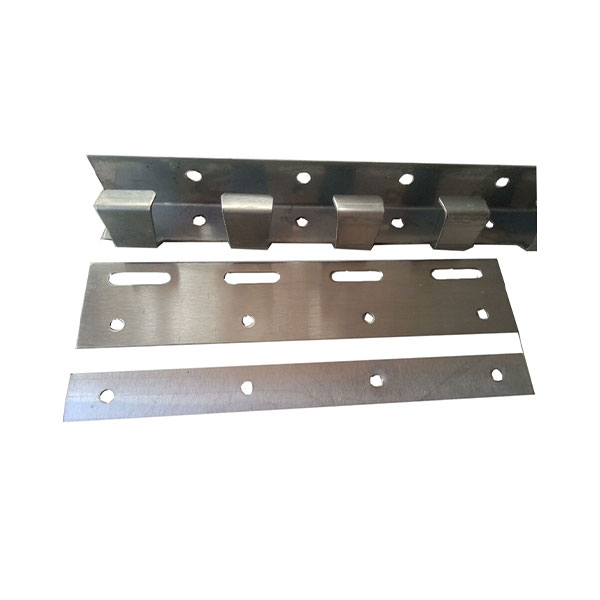curtain wall
The Evolution and Importance of Curtain Walls in Modern Architecture
Curtain walls have revolutionized the way buildings are designed and constructed, serving as a fundamental element in modern architecture. These non-structural cladding systems enhance a building's aesthetics while providing essential protection against the elements. As urban landscapes evolve, the role of curtain walls becomes increasingly prominent, contributing not only to a building's design but also to its energy efficiency and sustainability.
Definition and Components
A curtain wall refers to an outer covering of a building that is not load-bearing. Unlike traditional walls that support structural loads, curtain walls are designed to resist air and water infiltration, and to protect against wind forces. Typically composed of lightweight materials such as glass, metal panels, or other composite materials, curtain walls can be customized to meet specific design requirements while allowing for greater design flexibility.
The primary components of curtain walls include framing systems—often made of aluminum or steel—and infill panels made of glass or other materials. Glass is particularly popular due to its ability to provide natural light and uninterrupted views, creating a sense of openness within urban environments. The use of advanced glazing technologies, such as low-emissivity (low-E) coatings, further enhances energy efficiency, reducing heating and cooling costs.
Historical Context
The concept of curtain walls traces back to the early 20th century, with notable developments in the early skyscrapers of cities like New York and Chicago. The first prominent example of a curtain wall was the Lake Shore Drive Apartments designed by Mies van der Rohe in 1951. This building showcased a steel frame clad in reflective glass, setting a precedent for the future of high-rise construction. The use of curtain walls allowed architects to break away from traditional design constraints, enabling the creation of sleek, modern structures that define contemporary skylines.
Aesthetic Appeal
One of the key advantages of curtain walls is their aesthetic versatility
. Architects can manipulate the design to achieve unique visual effects, whether through the use of varied colors, textures, or patterns. The transparency offered by glass curtain walls fosters a connection between interior and exterior spaces, promoting a seamless interaction with the surrounding environment. Additionally, the ability to incorporate sustainable elements such as green walls or solar panels further enhances the visual appeal while contributing to environmental goals.curtain wall

Energy Efficiency and Sustainability
As the demand for sustainable architecture grows, curtain walls have emerged as important players in reducing a building's carbon footprint. High-performance curtain wall systems are designed to optimize energy usage, integrating advanced technologies such as photovoltaic panels and automated shading systems. These innovations help to minimize energy consumption while ensuring comfortable indoor environments.
Moreover, the use of recyclable materials in curtain wall construction aligns with architectural sustainability practices. By selecting materials that can be reused or recycled at the end of their life cycle, architects and builders can contribute to the circular economy, promoting a more sustainable approach to construction.
Challenges and Considerations
Despite their advantages, curtain walls present several challenges. The installation process requires skilled labor to ensure proper alignment and sealing to prevent water infiltration. Furthermore, the maintenance of glass curtain walls can be demanding, as they require regular cleaning to preserve their aesthetic appeal and performance.
Climate considerations also play a significant role in the design of curtain walls. In regions with extreme weather conditions, additional engineering measures may be necessary to ensure that the curtain wall system can withstand high winds or heavy snow loads.
Conclusion
In conclusion, curtain walls represent a significant evolution in architectural design, providing modern buildings with aesthetic sophistication and functional performance. As cities continue to grow and evolve, the importance of curtain walls in achieving energy efficiency and sustainability cannot be overstated. By embracing new technologies and innovative designs, architects can create iconic structures that redefine urban landscapes while meeting the challenges of the 21st century. The curtain wall is not just a facade; it is a testimony to the ingenuity of modern architecture and its potential to shape a sustainable future.
-
Durable Welding Strip Curtain Rolls for Safety & EfficiencyNewsAug.21,2025
-
Heavy Duty Cold Room PVC Strip Curtains - Energy Efficient SolutionsNewsAug.19,2025
-
Durable PVC Curtain Track - Easy Install & Smooth GlidingNewsAug.18,2025
-
Durable PVC Strip Curtain Hanger | Stainless Steel MountNewsAug.17,2025
-
PVC Folding Curtain: Space-Saving & Stylish PrivacyNewsAug.16,2025
-
Industrial Roll Up Curtains | Durable & Clear PVC SolutionsNewsAug.15,2025



